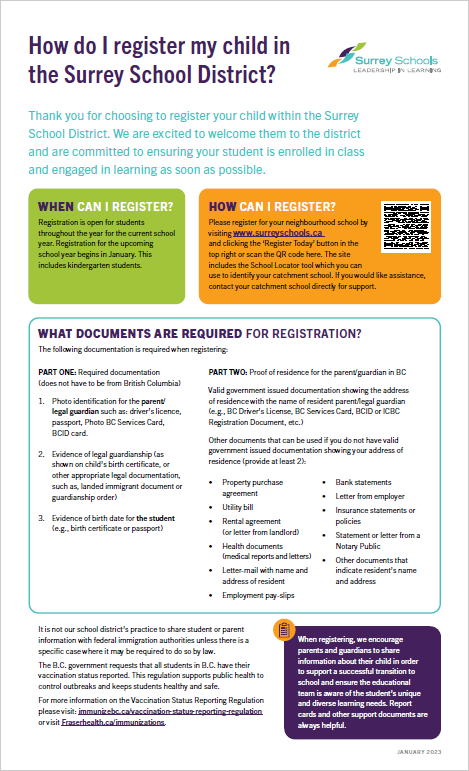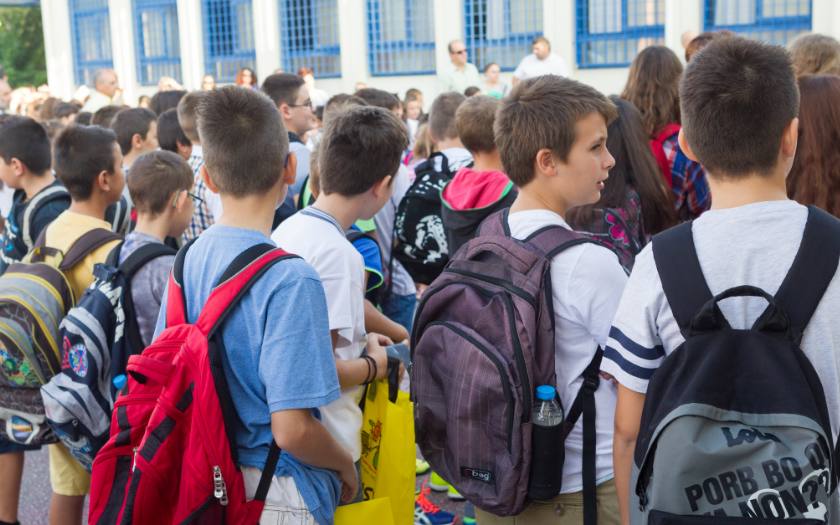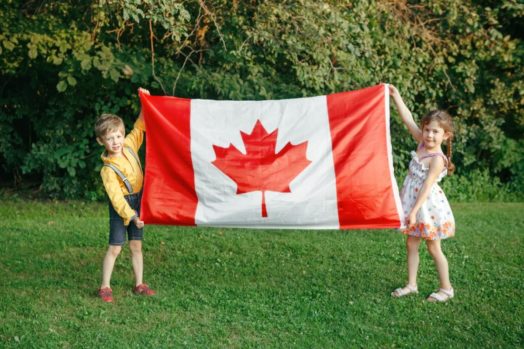How to register children in Canadian schools?
Are you moving to Canada and wondering how to register your children in Canadian schools? Look no further! In this article, we will provide you with all the necessary information and step-by-step guidance to ensure a smooth and successful enrollment process for your little ones. Whether you are a Canadian citizen or a newcomer to the country, we’ve got you covered. From required documents to finding the right school, we’ll help you navigate through the process with ease. Let’s get started on this exciting educational journey for your children!

Required Documents
When registering your child for school in Canada, there are several documents that you will need to provide. These documents are essential for the school to verify your child’s eligibility and ensure that they are placed in the appropriate grade level. The required documents typically include proof of residence, proof of age, proof of citizenship or immigration status, and health records.
Proof of residence
Proof of residence is necessary to determine which school district and catchment area your child belongs to. This can typically be done by providing a current utility bill or a lease agreement showing your residential address. It is important to ensure that the provided document is recent and clearly shows your name and address.
Proof of age
To verify your child’s age, you will need to present their birth certificate or another document that confirms their date of birth. This helps the school determine the appropriate grade level for your child.
Proof of citizenship or immigration status
Schools in Canada require proof of either citizenship or immigration status to ensure that students are eligible for enrollment. Canadian citizens can provide their birth certificate or Canadian passport as proof, while permanent residents will need to provide their Permanent Resident card or a Confirmation of Permanent Residence document. If your child is an international student, you will need to provide their study permit or other relevant immigration documents.
Health records
Health records are necessary for the school to ensure that your child’s immunizations are up to date and to be aware of any specific health concerns or allergies. You will need to provide your child’s immunizations records, which can typically be obtained from your family doctor or local health authority.
School Options
When registering your child for school in Canada, you have a variety of options to choose from. The type of school you choose will depend on your child’s needs, preferences, and your personal circumstances. The main school options available in Canada are public schools, private schools, French immersion schools, and special education programs.
Public schools
Public schools in Canada are government-funded and provide education to all Canadian residents free of charge. They follow the provincial curriculum and offer a wide range of programs and resources. Public schools are a popular choice for many families due to their accessibility and diverse student population.
Private schools
Private schools in Canada are funded through tuition fees paid by parents and are not government-funded. They often offer specialized programs, smaller class sizes, and unique educational approaches. Private schools are known for their high academic standards and provide a more personalized educational experience.
French immersion schools
French immersion schools are a popular choice for families who want their child to become bilingual. These schools offer a curriculum where the primary language of instruction is French. Students are immersed in the French language and culture, with the goal of achieving fluency in both English and French.
Special education programs
Special education programs are designed to meet the needs of students with disabilities or learning challenges. These programs provide additional support, resources, and accommodations to ensure that every student has equal access to education. Special education programs can be found in both public and private schools.

LIST OF CANADA SCHOOLS
| School Name | Location |
|---|---|
| The York School | Toronto, ON |
| Crescent School | Toronto, ON |
| Upper Canada College | Toronto, ON |
| Branksome Hall | Toronto, ON |
| Havergal College | Toronto, ON |
| Bishop Strachan School | Toronto, ON |
| St. Andrew’s College | Aurora, ON |
| St. Mildred’s-Lightbourn | Oakville, ON |
| Ashbury College | Ottawa, ON |
| Elmwood School | Ottawa, ON |
| The Linden School | Toronto, ON |
| St. George’s School | Vancouver, BC |
| Crofton House School | Vancouver, BC |
| West Point Grey Academy | Vancouver, BC |
| Collingwood School | West Vancouver, BC |
| Shawnigan Lake School | Shawnigan Lake, BC |
| St. Michaels University School | Victoria, BC |
| Mulgrave School | West Vancouver, BC |
| Lakefield College School | Lakefield, ON |
| TFS – Canada’s Int’l School | Toronto, ON |
Enrollment Process
Enrolling your child in a Canadian school involves a series of steps that vary depending on the school and school district. It is important to familiarize yourself with the enrollment process to ensure a smooth transition for your child. Here are the common steps involved in the enrollment process:
Research the school district and catchment area
Before registering your child for school, it is important to research the school district and catchment area in which you reside. This will determine which schools your child is eligible to attend. School district websites often provide detailed information about their schools, catchment areas, and enrollment procedures.
Contact the school
Once you have identified the school(s) in your catchment area, reach out to them to inquire about their enrollment process. You can usually find contact information on the school’s website or by calling the school directly. The school administration will provide you with information on registration dates, required documents, and any other necessary steps.
Complete registration forms
After contacting the school, you will need to complete the registration forms provided by the school. These forms gather important information about your child, such as their personal details, previous educational history, and any special needs they may have. Take your time to accurately fill out these forms to ensure that the school has a complete understanding of your child’s needs.
Submit required documents
As mentioned earlier, there are several documents that you will need to provide when registering your child for school. Make sure to gather all the necessary documents, including proof of residence, proof of age, proof of citizenship or immigration status, and health records. Submit these documents to the school along with the completed registration forms.
Attend orientation or information session
Some schools may offer orientation or information sessions for new students and their families. These sessions provide an opportunity to familiarize yourself with the school’s policies, procedures, and staff. It is highly recommended to attend these sessions as they can help alleviate any concerns and provide valuable information about your child’s upcoming school experience.
School Registration Age
The age at which children can start school in Canada varies depending on the province or territory. Generally, children can start school in either kindergarten or grade one, depending on their age and development.
Kindergarten
In most provinces and territories, children can start kindergarten at the age of four or five. Kindergarten is a play-based, pre-school program that prepares children for formal schooling. It focuses on social and emotional development, early literacy, and numeracy skills. Some jurisdictions offer full-day kindergarten programs, while others may have half-day programs.
Elementary school
In the majority of provinces and territories, children enter elementary school at the age of six or grade one. Elementary school typically covers grades one to six or grades one to eight, depending on the jurisdiction. During these years, students continue to build upon the foundational skills learned in kindergarten and are introduced to a wider range of subjects, including language arts, mathematics, science, and social studies.
Middle school
Some provinces and territories have an intermediate school, also known as middle school, which spans grades six to eight. Middle school provides a transition between elementary and high school, allowing students to become more independent and explore their interests further. It often offers a diverse range of subjects and extracurricular activities.
High school
High school usually begins at grade nine or grade ten, depending on the province or territory. It encompasses grades nine to twelve and is a critical time in a student’s education, as it prepares them for post-secondary education or entering the workforce. High school offers a wide variety of courses and programs tailored to individual interests and career aspirations.

Catchment Area
Understanding the concept of a catchment area is essential when enrolling your child in a Canadian school. A catchment area refers to a geographical boundary determined by the school district within which students are eligible to attend a particular school.
Definition
A catchment area is a designated geographic zone surrounding a school. It is determined based on factors such as population distribution, available resources, and the capacity of the school to accommodate students. The purpose of a catchment area is to ensure that students have access to a nearby school and prevent overcrowding in certain schools.
Determining catchment area
To determine the catchment area for a specific school, you can typically refer to the school district’s website or contact the school directly. School district websites often provide maps outlining the catchment areas for each school, making it easier to identify which schools fall within your vicinity.
Residency requirements
Residency requirements for attending schools within a catchment area may vary depending on the school district. In most cases, families must reside within the catchment area to be eligible for enrollment. Proof of residence, such as a utility bill or lease agreement, is typically required during the registration process to confirm eligibility.
Enrollment priority for catchment-area residents
Schools often give priority to students residing within the catchment area when it comes to enrollment. This means that students who live within the catchment area have a higher chance of securing a spot at the desired school. However, it is important to note that enrollment priority policies can vary between school districts and schools, so it is advisable to check with the specific school for more information.
School Year
The school year in Canada generally follows a similar schedule across provinces and territories. However, specific dates for the start and end of the school year, as well as holidays and professional development days, may differ slightly depending on the jurisdiction.
Start and end dates
The school year in Canada typically begins in late August or early September and ends in late June or early July. Most provinces and territories have two semesters, with the first semester starting in the fall and the second semester starting in January. The exact dates may vary, so it is important to check with the school or school district for the specific start and end dates.
School holidays
Throughout the school year, there are several holidays and breaks when students do not attend school. These include statutory holidays such as Thanksgiving, Christmas, and Easter, as well as longer breaks such as winter break and spring break. The duration of these holidays may vary depending on the jurisdiction, so it is advisable to consult the school’s calendar for the specific dates.
Professional development days
Professional development days, also known as PD days, are designated days when teachers participate in training or planning activities. On these days, students do not attend school. Professional development days are scheduled periodically throughout the school year and are intended to enhance teacher skills and improve the overall educational experience for students.
Parent-teacher conferences
Parent-teacher conferences are scheduled meetings between parents and teachers to discuss a student’s progress, strengths, and areas for improvement. These conferences provide an opportunity for parents to ask questions, address concerns, and work collaboratively with the teacher to support their child’s education. The frequency and scheduling of parent-teacher conferences can vary between schools, so it is important to stay informed about these opportunities for communication.

Language of Instruction
In Canada, there are three main categories of schools based on the language of instruction: English-language schools, French-language schools, and bilingual schools. The choice of language of instruction depends on various factors, including personal preference, linguistic and cultural background, and future academic or career goals.
English-language schools
English-language schools are the most common type of schools in Canada. They provide instruction in English and follow the provincial curriculum. These schools cater to students whose first language is English or those who may be fluent in English but have a different linguistic background.
French-language schools
French-language schools provide instruction in French and follow the provincial curriculum. These schools are designed for students whose first language is French or those who wish to learn in a French-speaking environment. French-language schools are available in provinces and territories with a significant French-speaking population, such as Quebec, New Brunswick, and parts of Ontario and Manitoba.
Bilingual schools
Bilingual schools offer instruction in both English and French. These schools provide an opportunity for students to become proficient in both languages, enabling them to communicate effectively in both English and French-speaking environments. Bilingual schools can be found in certain regions throughout Canada and are often a popular choice for families seeking a balanced bilingual education for their children.
Curriculum and Education Programs
The curriculum and education programs in Canadian schools aim to provide students with a well-rounded education and the necessary knowledge and skills to succeed academically and in their future careers. While the curriculum is provincially regulated, there are additional specialized programs available to enhance the learning experience.
Provincial curriculum
Each province and territory in Canada has its own curriculum that outlines what students should learn at each grade level. These curricula are developed by education ministries and are designed to meet specific learning outcomes. The provincial curriculum typically covers subjects such as language arts, mathematics, science, social studies, physical education, and the arts.
International Baccalaureate (IB)
The International Baccalaureate (IB) is a globally recognized education program that offers a challenging and comprehensive curriculum. IB programs are available in many schools across Canada and are known for their rigorous academic standards and emphasis on critical thinking, inquiry-based learning, and international-mindedness. The IB program consists of different levels, including the Primary Years Program (PYP), Middle Years Program (MYP), and Diploma Program (DP).
Advanced Placement (AP)
Advanced Placement (AP) courses provide high school students with an opportunity to engage in university-level coursework. These courses are challenging and give students the chance to earn college credits if they achieve qualifying exam scores. AP programs are widely recognized by universities in North America and can provide students with a competitive edge when applying for post-secondary education.
Specialized programs
Many schools in Canada offer specialized programs that cater to specific interests or talents. These programs can focus on areas such as arts, athletics, technology, science, or languages. Specialized programs provide students with the opportunity to pursue their passions and develop their skills in a specific area, enhancing their overall educational experience.

Special Education Services
Special education services aim to meet the unique learning needs of students with disabilities or learning challenges. These services provide additional support, accommodations, and resources to ensure that every student has equal access to education.
Individual Education Plan (IEP)
An Individual Education Plan (IEP) is a personalized plan that outlines the specific learning needs of a student with a disability or learning challenge. The IEP is developed in collaboration with the student, parents, teachers, and other professionals involved in the student’s education. It identifies goals, accommodations, and strategies to support the student’s learning and overall well-being.
Learning support teachers
Learning support teachers are specialized educators who work with students who have diverse learning needs. These teachers provide targeted instruction, remediation, and accommodations to help students overcome learning challenges and reach their full potential. They collaborate with classroom teachers, parents, and other professionals to ensure a holistic and inclusive educational experience.
Resource rooms
Resource rooms are designated spaces within a school where students can receive additional support and instruction. These rooms are equipped with specialized materials and resources to cater to the diverse learning needs of students. Resource room teachers and support staff work closely with students to provide individualized instruction and support in a small-group setting.
Alternative education programs
Alternative education programs offer alternative approaches to traditional classroom instruction. These programs are designed to meet the needs of students who may thrive in a different environment or require a specialized approach to education. Alternative education programs can include online learning, homeschooling, specialized academies, or programs focused on specific interests or career pathways.
School Transportation
Getting to and from school is an important consideration when registering your child. Depending on your location and the school’s policies, there are several options for school transportation.
School bus service
Many schools in Canada provide school bus service for students who live a certain distance from the school. School buses are a safe and convenient way for students to commute to school, especially in rural or suburban areas. It is important to familiarize yourself with the school’s bus policies, including bus schedules, pick-up and drop-off locations, and any associated fees or registration requirements.
Public transportation
In urban areas, students may have access to public transportation options such as buses, trains, or subway systems. Public transportation can be a cost-effective and environmentally friendly way for students to travel to and from school. Familiarize yourself with the local public transportation routes and schedules to ensure a smooth commute.
Walking or cycling to school
Some families choose to have their children walk or cycle to school if they live within a reasonable distance. Walking or cycling can promote physical activity, independence, and a sense of community. However, it is essential to assess the safety of the route and discuss road safety practices with your child.
In conclusion, registering your child for school in Canada involves a series of steps, from gathering the required documents to choosing the right school and transportation options. By following the enrollment process and familiarizing yourself with the educational programs and support services available, you can help ensure a smooth and successful transition for your child into the Canadian education system. Remember to reach out to the school and school district for specific information and guidance throughout the registration process, as they will have the latest and most accurate information regarding policies and procedures.







